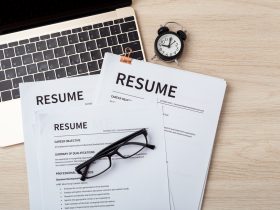Decoding the Job Application
Before delving into the nuances of composing an application, it is imperative to understand the importance of this document. A job application transcends being just a piece of paper or a digital questionnaire; it is your initial introduction to a prospective employer. It crystallizes your professional identity, spotlighting your skills, experiences, and enthusiasm to be a catalyst for the company’s success.
Deconstructing a Job Application Form
Solving the job application puzzle is possible by examining the details step by step.
1. Contact Information
The foundation of any job application lies in providing precise contact details. This section should include your full name, address, contact number, and a professional email address. Avoid using frivolous email aliases; instead, choose something that reflects your professionalism, incorporating your name.
2. Educational Background
This section offers a condensed overview of your academic journey. Begin by mentioning your highest degree, followed by relevant certifications or courses. Specify the institution’s name, year of completion, and any awards or honors received. This section allows employers to assess your academic qualifications and their alignment with the job requirements.
3. Professional Experience
Unquestionably, this is the core of your application. Present your previous roles clearly and systematically, starting with the most recent. Provide the company’s name, your job title, the duration of your tenure, and a concise overview of your responsibilities and achievements. Infuse vitality into your descriptions by using action verbs to emphasize your successes and contributions to the organization’s prosperity.
4. Customized Cover Letter
Along with your application form, include a meticulously tailored cover letter. This is your opportunity to convey your enthusiasm for the role and explain how your skills and experiences align with the company’s goals. Pay special attention to addressing the hiring authority by name and tailoring the content to resonate with the specific job description.
5. Additional Information
Depending on the job application, there may be sections for supplementary information. This could include references, links to your portfolio, or responses to specific questions from the employer. Ensure all additional details are relevant and enhance your overall suitability for the position.
Crafting a Cover Letter for a Job Application: The Art Unveiled
A meticulously structured cover letter serves as a complementary addition to your job application. Below is a step-by-step guide for creating an engaging cover letter:
1. Header and Salutation
Start with your contact information, including your name, address, contact details, and professional email address. Follow this with the application date and the recipient’s name, title, and company. If a specific name is unavailable, use a generic salutation such as “Dear Hiring Manager.” The job application email must have a professional subject line for the recipient to consider your submission.
2. Introduction
Begin the opening paragraph by expressing your interest in the position and briefly introducing yourself. Mention how you came across the job listing or any mutual connections you may have.
3. Body
In this section, delve into the specifics. Highlight your relevant skills, experiences, and achievements. Establish connections between your qualifications and the job requirements, emphasizing the value you bring to the table.
4. Demonstrating Your Suitability
Elaborate on why you are uniquely suited for the role. Showcase your understanding of the company’s mission, values, and industry trends. Demonstrate how your contributions can drive the company’s growth and success.
5. Conclusion and Call to Action
In the concluding paragraph, express your eagerness to discuss your potential contribution further. Thank the employer for their time and consideration. Conclude with a proactive statement, indicating your availability for an interview.
Navigating Online Job Application Forms
In this digital age, many companies use online job application forms. You can learn about the format of a cover letter for job applications and manage the process correctly. Here are some pointers to navigate this process effectively:
- Thoroughly Read and Follow Instructions: Dedicate time to review and adhere to the provided instructions. This demonstrates your attention to detail and your ability to follow guidelines.
- Prepare Your Documents in Advance: Have your CV, cover letter, and any supporting documents ready in the required format (PDF, Word, etc.) before starting the online application.
- Maintain Records: Keep a record of the positions you’ve applied for and any login credentials or confirmation emails. This ensures you can track your progress and follow up appropriately.
- Tailor Your Responses: Online forms may include specific questions or prompts. Customize your responses to align with the job requirements and corporate culture.
Charting Your Path to Success
Proficiency in completing a job application is an invaluable asset in today’s competitive job market. By understanding the key components, crafting a tailored cover letter, and effectively using online application forms, you can significantly increase your chances of landing your dream job. Remember, your application is more than a formality—it’s your ticket to a brighter, more fulfilling professional future.









